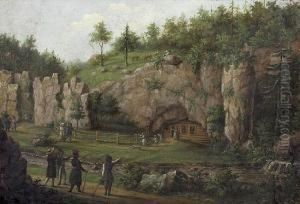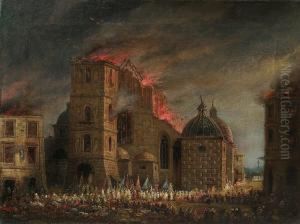Teodor Stachowicz Paintings
Teodor Stachowicz was a prominent Polish artist known for his work as a painter, illustrator, and art teacher. He was born on May 12, 1848, in Kraków, which at the time was part of the Austrian partition of Poland. Stachowicz showed an early interest in the arts and pursued his passion by studying at the School of Fine Arts in Kraków under the guidance of leading Polish artists such as Jan Matejko, who was a significant influence on his work.
Stachowicz's artistic style was primarily realist, with a strong focus on historical and genre scenes. His works often depicted moments from Polish history, traditional customs, and rural life, reflecting his deep interest in the national heritage and folklore of Poland. This was in line with the broader Polish National Romanticism movement, which sought to preserve and promote Polish culture during a period when the country was partitioned and lacked independence.
Throughout his career, Teodor Stachowicz was also actively involved in the artistic community of Kraków. He was a member of various art societies and contributed to the cultural life of the city. As an illustrator, he worked on several publications, including books and periodicals, where his illustrations further popularized historical and folk themes.
In addition to his work as an artist, Stachowicz was dedicated to education. He taught at the School of Fine Arts in Kraków, where he had once been a student, nurturing a new generation of Polish artists. His teaching and mentorship played a significant role in the development of Polish art in the late 19th and early 20th centuries.
Teodor Stachowicz's contribution to Polish art was recognized during his lifetime, and his works were exhibited in various national exhibitions. He received accolades for his artistic achievements and was respected by both his peers and students. Stachowicz passed away on December 28, 1938, in Kraków, leaving behind a legacy as one of the notable figures in Polish art history. His paintings can still be seen in museums and galleries in Poland, where they continue to be appreciated for their historical value and artistic merit.

